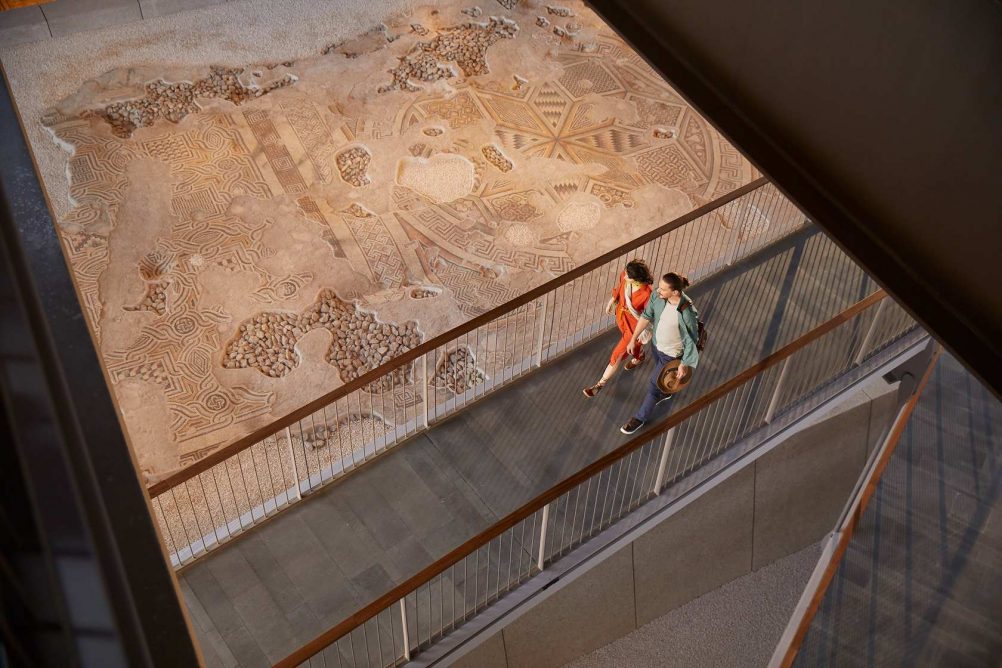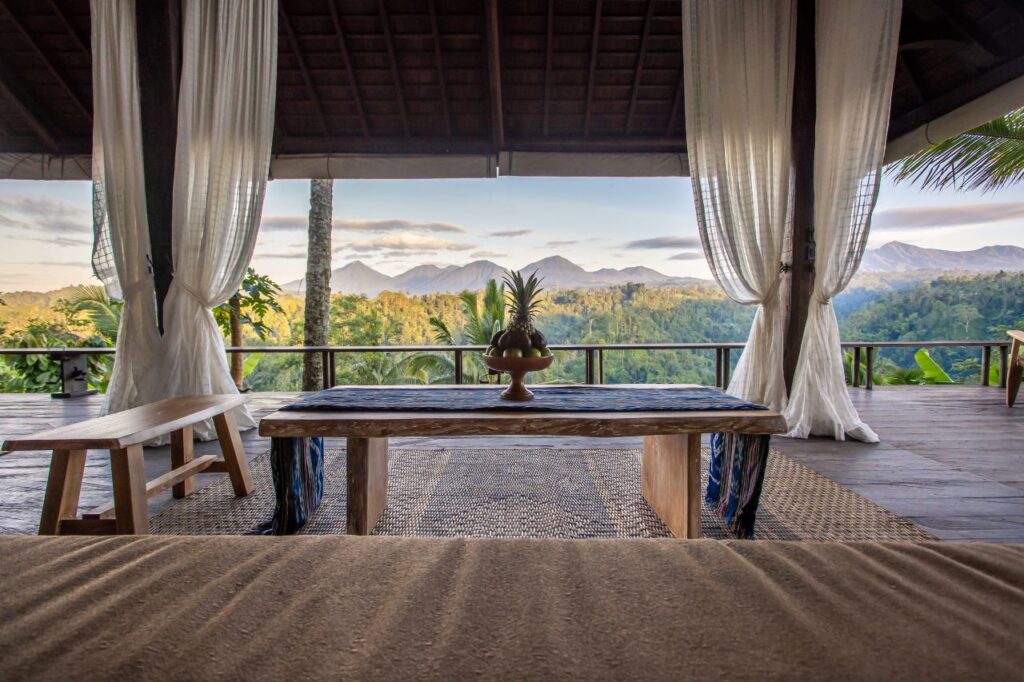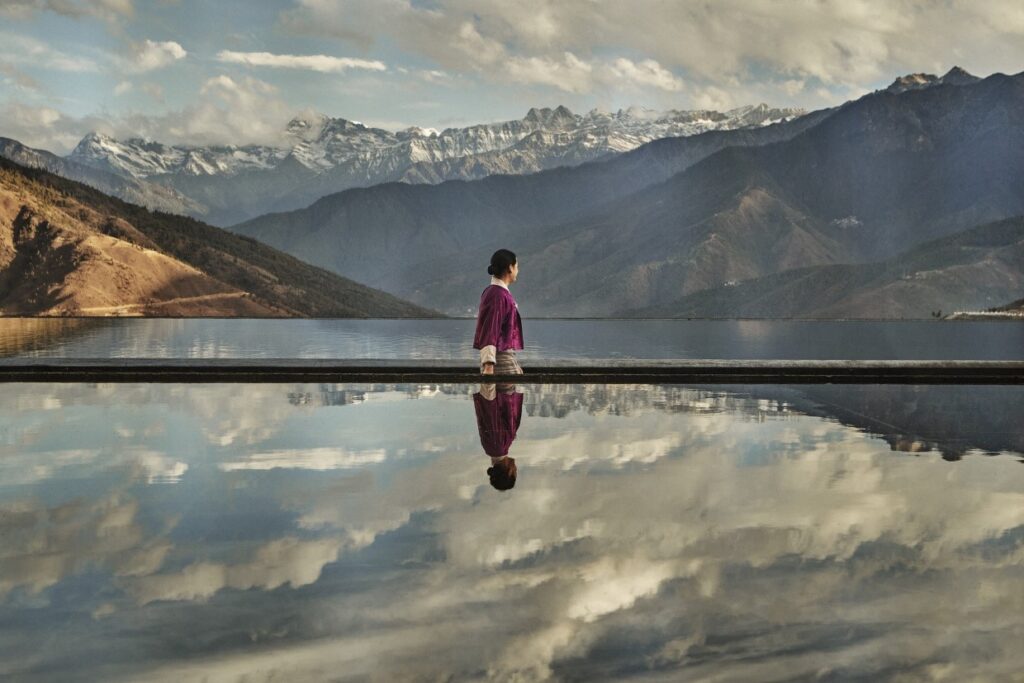How this floating hotel preserves ancient treasures
Step into the past at this one-of-a-kind Turkish hotel
Words by Ute Junker
Photos supplied
If Antakya had a visitors’ book, it would be a page-turner. The sun-drenched city in southern Turkey, known for centuries as Antioch, has provided the backdrop for an extraordinary cast of characters. They include Antony and Cleopatra, who dallied here, to Saints Peter and Paul, who preached here, and even the medieval French queen Eleanor of Aquitaine who – according to contemporary gossip – had an affair with her uncle here.
All that history draws plenty of visitors – and now those visitors can drift off to sleep floating above some of the city’s most remarkable relics. At the five-star The Museum Hotel Antakya, hotel rooms are suspended directly above ancient ruins, which guests can admire both from above and from ground level.
It wasn’t planned this way. When local company the Asfuroğlu Group decided to build the city’s first five-star hotel back in 2009, they had no idea what lay beneath their chosen site. They were blindsided when a pre-construction borehole survey indicated the existence of extensive archaeological remnants.
“We made the decision to finance an archaeological excavation under the supervision of a committee of conservation consultants, professors from different universities and the Ministry of Culture and Tourism,” says Sabiha Asfuroğlu Abbasoglu, CEO of what is now The Museum Hotel Antakya.
Development plans were put on hold for a year as the site became Turkey’s largest systemic archaeological excavation since the 1930s. “Every day we would get to work from 5am, with our team of 120 construction workers, 35 archaeologists and five restoration architects, using hundreds and thousands of brushes and dental equipment,” Asfuroğlu Abbasoglu remembers.
The dig unearthed Roman-era public baths and shops, a roadway, and some magnificent mosaics, including the largest single-piece floor mosaic ever uncovered, a vividly-coloured geometric mosaic – its surface rippled by ancient earthquakes – that covers more than 1000 square metres. Thousands of artefacts were excavated by hand, piece by piece, then documented with architectural sketches. “With each new discovery, our devotion and emotional connection to the project grew.”
Working with Emre Arolat Architecture, the team threw out their old plans and brainstormed an entirely new concept, a complex that would include not just a hotel but also a museum, allowing the public to get close to the ruins.
“What makes these finds special is that they are not taken from somewhere else – they belong here, to the people who lived here. It’s like time travel,” Asfuroğlu Abbasoglu says. “We thought, maybe this is our role in life. This place deserves to be known globally.”
Creating a design that embraced all those elements proved to be both an architectural and an engineering challenge. Emre Arolat’s ingenious design has the hotel resting on 66 steel columns, carefully positioned in areas where no remains had been found. Hotel rooms are housed in prefabricated boxes floating high above the ground, linked by a series of metal walkways and bridges. Tucked inside your room, you could be in any other luxury hotel; step outside, however, and you find yourself looking down on a state-owned 17,000 square metre archaeology park with its own museum.
The construction process was a slow one, with archaeologists supervising construction workers as they dug the 25-metre-deep post-holes and drying and sifting the surplus soil. Just as the end seemed to be in sight, however, along came another curveball.
“Just before one of the steel columns was going to be inserted, we came across the edge of a mosaic,” says Asfuroğlu Abbasoglu. The find halted construction for a year and a half. “To redo the static calculations for the building and find a new place for this steel column was no easy feat; but the Pegasus mosaic [was] worth the effort.”
The Pegasus mosaic – identified as being the floor of a wealthy person’s dining room – is a true masterpiece. The artist used stones in 162 different shades to create images as exquisitely detailed and vibrantly alive as a Renaissance portrait. Apart from the winged horse, Pegasus, the mosaic also includes the first known depiction of the Greek poet Hesiod, seen receiving his inspiration from the muse Calliope.
The Museum Hotel Antakya has deservedly become an attraction in its own right, one that literally offers its guests a window onto the past. Other amenities include a rooftop breakfast room where guests can enjoy a traditional Turkish breakfast while gazing out across the city; a superb restaurant focused on Antakyan specialties, the most celebrated cuisine in Turkey; and a spa where visitors can experience a classic hammam treatment, which leaves you feeling both relaxed and cleaner than you have ever been before.



